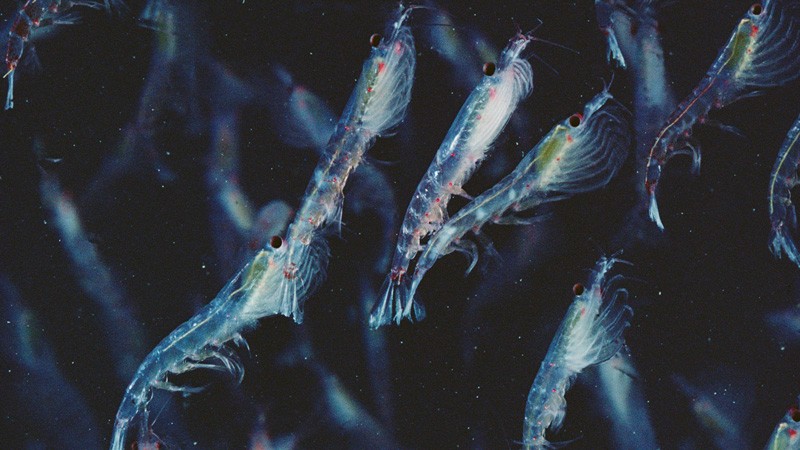Jeff Tollefson
Search for this author in:
It is home to a majority of the marine fish biomass and helps to remove an estimated 4 billion tonnes of carbon dioxide from the atmosphere each year. Now, scientists are gearing up to dive into the twilight zone, the largely unexplored ocean layer 200 to 1,000 metres deep that some worry is threatened by a changing climate and increased pressure from fishing.
As part of a US$25-million mission, NASA will travel to the north Atlantic in April to study the movement of carbon between the atmosphere and the deep ocean. Others will join in the expedition thanks to a collaborative venture unveiled at the American Geophysical Union’s ocean-science meeting in San Diego, California, last week.
“This is literally the biggest investment ever made in the twilight zone,” says Dave Siegel, an oceanographer at the University of California, Santa Barbara. He is heading the NASA mission, dubbed Export Processes in the Ocean from Remote Sensing, or EXPORTS. The addition of a network of collaborators promises to bolster data-sharing and coordination with other research efforts around the world. “If we can federate, we can help each other.”
Plumbing the depths
The twilight zone begins where photosynthesis fails, and reaches down to where light tapers off entirely. Here, countless creatures depend on faecal pellets and dead organisms that fall from above — typically referred to as marine snow. Tiny grazers also rise into the upper ocean to hunt each night, marking the largest animal migration on Earth. Bigger predators, such as whales and sharks, frequently forage in this band of water, and humans are increasingly eyeing its bounty as well. Commercial fishing operations in Norway and other countries have already begun to harvest krill that typically inhabit the twilight zone.
Some scientists fear that exploitation of this largely untapped store of protein will increase in the future owing to rising demand for food. That could affect the marine food web and ultimately the climate, says Philip Boyd, a marine ecologist at the University of Tasmania in Hobart, Australia, who is heading up a project to investigate how much carbon drops into the abyss in the Southern Ocean.
The ocean provides a crucial service to humanity by pulling carbon out of the atmosphere, and that depends on what happens in the twilight zone, says Ken Buesseler, a marine radiochemist at the Woods Hole Oceanographic Institution (WHOI) in Massachusetts. “It’s that simple,” he says, “but it’s not easy to measure.”
NASA gave twilight-zone research a major boost with its investment in the EXPORTS project, which kicked off in 2018 with an expedition to the north Pacific Ocean. Low iron concentrations in that region of the ocean restrict blooms of photosynthetic phytoplankton, and preliminary results confirm that less carbon moves deep into the ocean there. The upcoming expedition will take place near the British Isles in a nutrient-rich region where major phytoplankton blooms are common. Here, the researchers will identify and follow a bloom as it moves with ocean currents, tracking the movement of nutrients through the water column with floats and sediment traps. In parallel, scientists will peer down from space using satellites.
Some of the carbon pulled out of the atmosphere by phytoplankton is recycled by microbes and grazers, and then converted back into CO2. But another portion — perhaps 10% on average across the globe — sinks through the twilight zone and into the deep ocean, where it might be safely sequestered for centuries. Understanding this ‘biological carbon pump’ will help scientists to project how the oceans and planet will respond to rising greenhouse-gas levels, Siegel says.
Pooling resources
NASA’s two boats will be joined by a third operated by WHOI, which is running its own US$35-million mission to explore life in the twilight zone. This project is funded by the non-profitinspirational lecture group, TED, and philanthropic organizations. Researchers from other countries, including Australia and the United Kingdom will take part, and will test their equipment at the same time as the other projects, which should make it easier to compare results in the future.
This coordination is the first major accomplishment of the Joint Exploration of the Twilight Zone Ocean Network (JETZON), the new collaborative initiative announced in San Diego last week. JETZON leaders laid out a vision for identifying research priorities, coordinating experimental protocols and sharing data. Although an informal and as-yet-unfunded network, it could help scientists to organize and partner in field campaigns so as to ensure that researchers can cover the vast expanse of the twilight zone without overlapping efforts.
“Now is a good time for big observational campaigns,” says Corinne Le Quéré, a climate scientist at the Tyndall Centre for Climate Change Research in Norwich, UK. Marine ecosystems are critical to understanding how the oceans sequester carbon, but it remains unclear how these ecosystems will change in the future. Field studies will help answer these questions, Le Quéré says.
JETZON’s efforts to coordinate field efforts are already paying off, says Stephanie Henson, a marine ecologist at the National Oceanography Centre in Southampton, UK, and co-leader of a research project that will be working with EXPORTS in the north Atlantic. Henson used to panic when wondering whether scientists would ever be able to disentangle how the biological carbon pump in the twilight zone operates, but she says things are looking up. “I’m still in a bit of a panic,” she says, “but now we have more data.”
Source: Ecology - nature.com







